If there’s one thing marketers love, it’s coining a shiny new term. New concepts, words and phrases seem to emerge within the marketing industry in a non-stop stream. But fear not. Our big Maverick marketing glossary is here to keep you up to date. Whether you’re a seasoned professional or a newbie, we’ll make sure you know your BIMI from your bounce rate.
With A/B testing, you create two versions of a digital asset, for example, an email, online ad, a landing page or social media post. You then publish them and see which one your users like most. Half your audience get ‘version A’ and the other half ‘version B’. You can measure the response to both by tracking metrics such as Click-Through Rates or sales conversions.
In simple terms, ABM is when you target a small number of leads rather than casting a wide net. With this approach, you focus all your resources on winning best-fit, high value accounts. Once prospects have been identified, Sales and Marketing work together (smarketing) to create personalised campaigns. The result? Turbo-boosted ROI, particularly for B2B.
Account management is the art of building client relationships. This helps you retain a client’s business and generate more opportunities. Account Managers work to understand a client’s goals and help them achieve them. It’s about developing trust and adding long-term value.
AdSense is the name of a marketing programme run by Google. It pays website publishers for allowing relevant ads from Google to run on their sites automatically. Payment to publishers is usually on a pay-per-click (PPC) basis.
Editorial + advert = advertorial. In short, it’s a piece of text that uses an editorial style – like a normal article – to talk about a product or service. In a world where consumers are constantly bombarded by traditional advertising and increasingly immune, advertorials offer a way to engage through a story-telling experience. Online advertorials must state that they are “sponsored” or “paid” so users are not misled.
When an online advertiser pays a website publisher for leads that are generated via the publisher’s site, it’s called Affiliate Marketing. Partnering with affiliates helps your advertising reach further and builds your profile with your target audience. And the good thing about it is that you only “pay for performance.” Bloggers are common affiliate partners.
As the name suggests, Agile marketing is where marketers adopt the principles of Agile methodology, which is used in software development. A tactical marketing approach, it involves teams focusing their collective efforts on high value projects, delivering those projects collaboratively, measuring their impact, and continuously improving the results over time. This allows marketing functions to be more transparent, adaptable and you guessed it – agile.
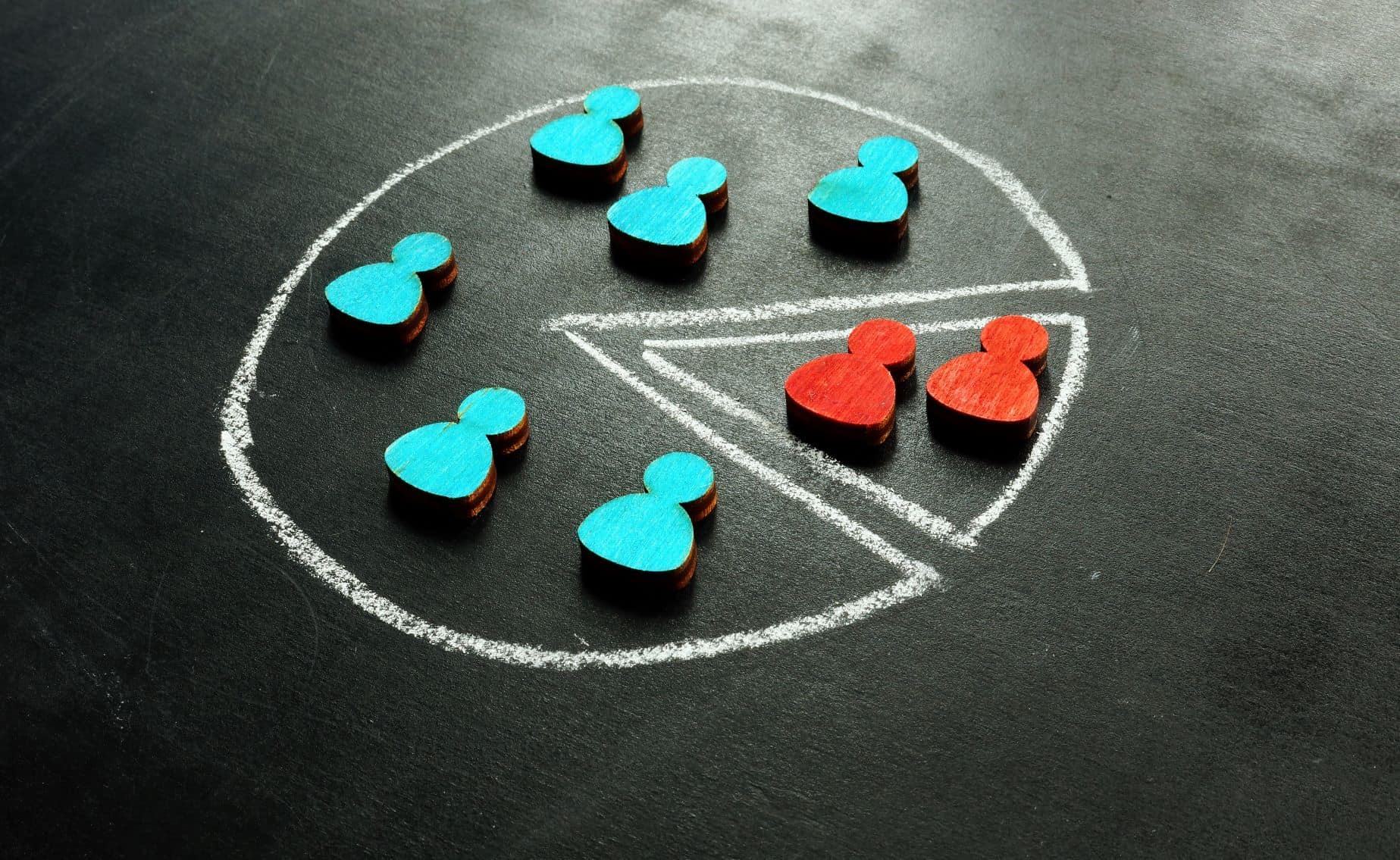
Pavement stencils. Signs on public benches. Projections on buildings. All these are examples of ambient media, where adverts are used in unconventional places. Ambient media allows you to step outside traditional media and reach people in out-of-home locations/environments. It also offers scope for wit and creativity. Get your ambient media concept right, and it could go viral.
Click-Through Rates. Engagement. Page views. Analytics is the study of metrics like these to develop, shape and assess marketing campaigns. You can then work out ROI, measure performance, spot opportunities for improvement and justify spend. Analytics are an essential tool for the modern marketer.
To target your audience effectively, you need to break it down. You can do this by age, geographic location, gender, level of education, income or other demographics. Once you’ve identified your subgroups, you can tailor your approach so you stand the best chance of engaging with each one. Base your marketing on their values, beliefs, attitudes and habits. Bingo: audience segmentation.
If someone links to your website, you have a backlink from them. If you link to someone else’s site, they have a backlink from you. Basically, backlinks are links from one website to another – and they’re more important than you might think. Backlinks give your site credibility, which boosts its search ranking, making it more discoverable and generating referral traffic.
You know those long, horizontal ads that sit across the top of a web page? Those are standard online banner ads – a reasonably low-cost digital ad option.
Using a potential customer’s browsing habits and online shopping behaviour to strengthen your marketing campaign is called behavioural targeting. It’s incredibly useful, because it adds solid, practical information to more abstract data such as demographics. Behavioural targeting can help you create highly relevant ads, in the right places, that target the right people.
TV, radio, billboards, newspaper advertising: that’s all above-the-line advertising. It’s mainstream with mass audiences. Below-the-line’s more personal and reaches consumers directly. Think direct mail campaigns, social media marketing, trade shows and targeting search engine marketing. Below-the-line is usually more focused and less expensive than its above-the-line sibling.
BIMI stands for Brand Indicators for Message Identification (BIMI). It’s an emerging security technology that helps users know that an email has genuinely come from you. With BIMI, your logo appears next to your messages in a user’s inbox. That way, your contacts and their email service know that they aren’t a scam, and have really come from you.
You know that point when a customer is engaged, interested and ready to purchase? They are at the bottom of the [sales] funnel. Although budgets tend to be spent on woo-ing and educating potential customers (the top and middle of the funnel), it’s really important to think about BOFU if you want to convert leads into definite sales.
Ever visited a website but quickly clicked away, having only viewed one page? You ‘bounced’ – in other words arrived, landed and left, without stopping to really engage. Bounce rate is the percentage of visits to a website where only one page was viewed: no links were clicked and no other pages were visited. If the bounce rate for your website is high, there are lots of solutions. Making sure you have a clear call to action, compelling web copy and attractive page design are all good starters.
Your brand is the essence of your business or organisation. It is represented visually through your brand identity. This can include elements such as a logo, colour palette, tone of voice and font, which work together to create a unique brand image. A brand refresh updates these elements. A rebrand takes you back to the drawing board.
This is the thinking behind your brand; its raison d’être. Strategy’s what shapes the brand itself, and its evolution. A Brand Manager is often the person behind these activities. They’ll make sure that your brand reflects your organisation’s values, personality, identity and target audience.
Brand value is how much your brand is worth on the balance sheet. Brand equity is more nebulous – it’s how consumers feel about the brand; their perception of it. For examples of brands that have bags of both, think Apple, Google, Coca-cola and Amazon.
A buyer persona is your brand’s ideal customer. It’s a profile that you create, based on research and data about your actual customers. This can include geographical location, age, interests and more. By building your marketing and product development around this persona, you can target the people most likely to buy from you and therefore maximise sales.
You’ve attracted the visitor to your website, spelt out your selling point and got them engaged. Now you need to tell them what you want them to do. This is your ‘Call To Action’ or CTA. And it’s a vital element of marketing, particularly online. Typical CTAs include ‘learn more’, ‘contact us’, ‘buy now’, ‘follow us’ and ‘sign up.’ A/B testing can help you discover which CTA works best.
A case study is a document that illustrates how you achieved a goal or helped a client achieve theirs. It is usually divided into several parts that explain the background, the challenge, your solution and the results. Case studies can be a compelling way of proving your organisation’s skills by showing the tangible impact it’s made. Just what you need to set you apart from the crowd.
When a corporation gets together with a non-profit organisation for the benefit of both, it’s known as cause-related marketing. The collaboration promotes the business’s sales at the same time as the non-profit’s cause. With more and more consumers making buying decisions based on ethical concerns, cause-related marketing is on the rise.
The number of customers who have left your business or service over a certain timeframe. It’s calculated as follows: number of customers lost / total number of customers.
The percentage of people who see your online marketing – which could be an email, an ad or a social media post – and then click on the link. This could take them to your website where they can buy your service or product. For example, if 50,000 users see your ad, and 50 users click on it, your click-through rate (CTR) is 0.001.
You know those ads where one washing detergent brand is compared to another and shown to be superior? Where a dazzling white T-shirt is shown next to a manky porridge-coloured version? That’s comparative advertising and it’s a highly effective way of directly showing that your product’s best. A word of warning, though. Most countries have strict laws around this kind of advertising. Check them out before you decide to show a rival in a disparaging light.
If you can produce your goods or services better or more cheaply than your rival, you’ve got a competitive advantage. This can lead to greater sales or better profit margins. All sorts of factors can have the power to set you apart, from customer service and product quality, to distribution costs and branding.
The CMS is the clever software that allows users to easily build and make changes to their website. Often without even needing to know the basics of how to code! There are numerous Content Management Systems out there, such as WordPress, HubSpot, Drupal and Wix.
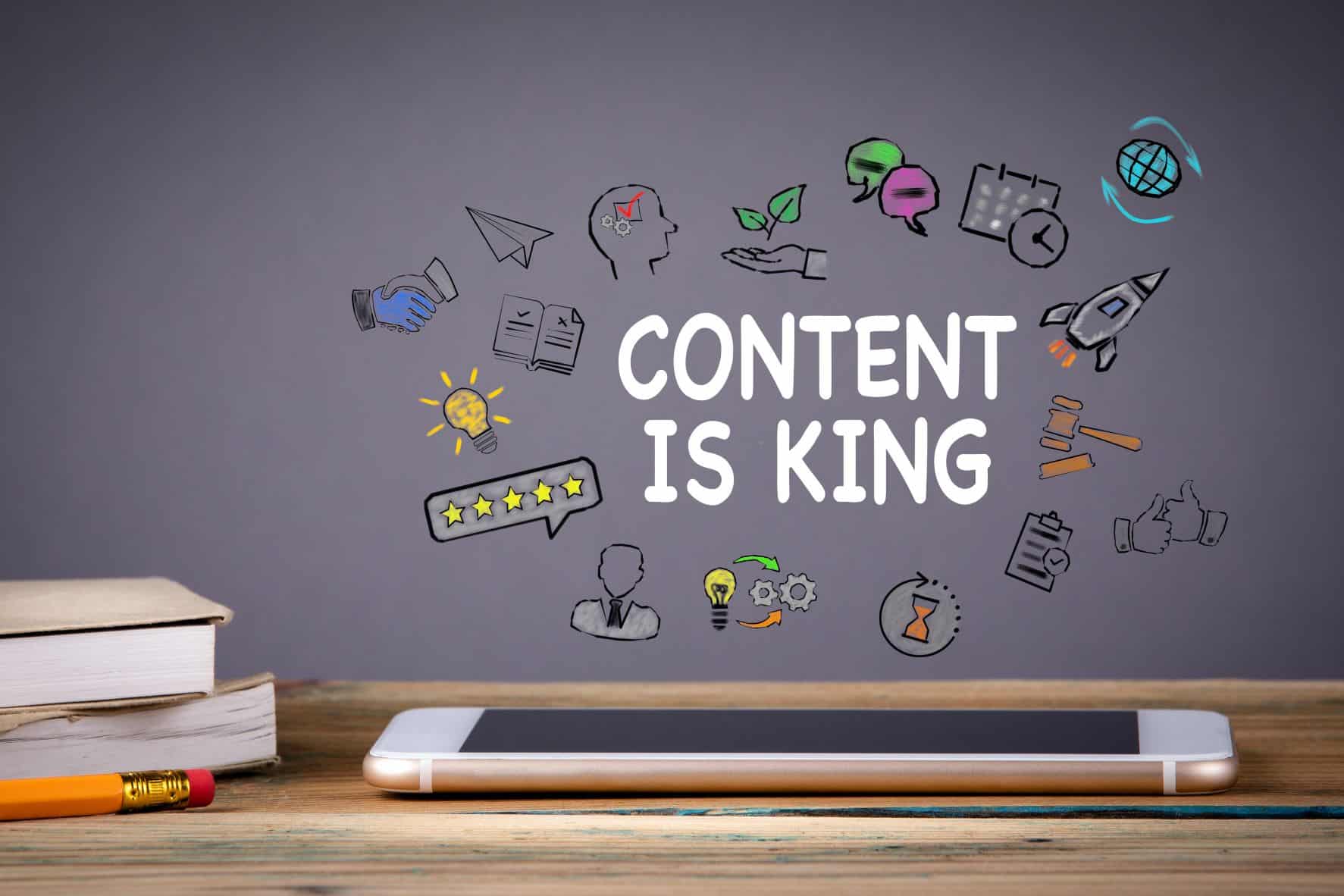
Connecting with an ad-weary public is more difficult than ever. With Content Marketing, you can reach them by sharing relevant articles, videos and podcasts. It’s a strategy that enables you to attract, engage and retain potential customers with material that is interesting and useful to them, and not purely sales-based. Through your content, you can also foster brand awareness.
For a visitor to your website to become a customer, they must take a journey – a conversion path. This typically involves a number of touchpoints. Although these can vary, they generally feature a landing page, a call to action, a thank you page (for taking the action) and an end point (often a content offer). Tailor the conversion path to your ideal customer if you want to see visitors skipping towards the check-out.
The percentage of user actions taken after total clicks on an ad or other digital asset. For instance, if you have a white paper you want people to download, your conversion rate would be the number of clicks on the ad promoting the white paper, divided by the number of downloads (user actions). The higher your conversion, the more successful your campaign… so work on that conversion rate optimization!
So, you’ve measured your conversion rate and think it could be better. How do you get more people to sign up/buy/download or generally do what you want them to do? There are two main ways to do that: A/B testing and personalised marketing. In both cases, you’ll use analytics to shape messages so they’re more persuasive for your audience. Apply one or both of these approaches, and boom – you’ve just performed Conversion Rate Optimisation.
Training videos, promo clips, investor relations films – they all fall under the title of corporate films. This particular marketing channel is an art form (especially in the hands of ERIC, The Maverick Group’s production crew).
This figure is how much it costs to gain one single customer. It’s a good way of analysing the cost efficiency of your marketing campaign. The full formula is: total campaign cost / conversions (paying customers) = CPA. This metric is often used to analyse the results of display ad and affiliate marketing campaigns.
A fee that a website publisher charges to serve your display ads on its site. However, instead of paying for your ads to appear, you only pay when the audience interacts with them. Google is a major publisher of cost-per-click (CPC) ads, and it contracts with other publishers to distribute them to other sites, too.
“Yeah,” says your agency contact airily, “once you’ve hammered out the brief, we’ll let the Creatives loose on it.” Who are these mysterious beings, ‘the Creatives’? In short, the designers and copywriters who’ll turn your thoughts into an actual concept. The work they produce is also often called “the creative”. It could be layouts or mock-ups of anything from a brochure to a marketing email.
In the most simple terms, the Customer Acquisition Cost is the total cost that it takes a business to acquire a new customer. However, in the broader marketing sense, it is often used as a way to highlight the average cost across a number of customers.
A good marketer will build their knowledge of a customer so they can create a profile. Details can come from many sources and need to be kept in a safe place where everyone can find them. That’s where a Customer Data Platform (CDP) comes in. It’s a central location for customer information that can be accessed by the whole team.
The customer journey is the whole experience a customer has with your organisation. From their initial perception of your brand, to first contact with your marketing, through to the legacy of a transaction. This map helps you understand every interaction and refine your marketing to create the very best experience.
CRM is the system you use to keep track of all things customer related. That includes projects and activity, but also emails, phone calls, appointments, and all interactions. Some software incorporates social media feeds, too. HubSpot is a good example.
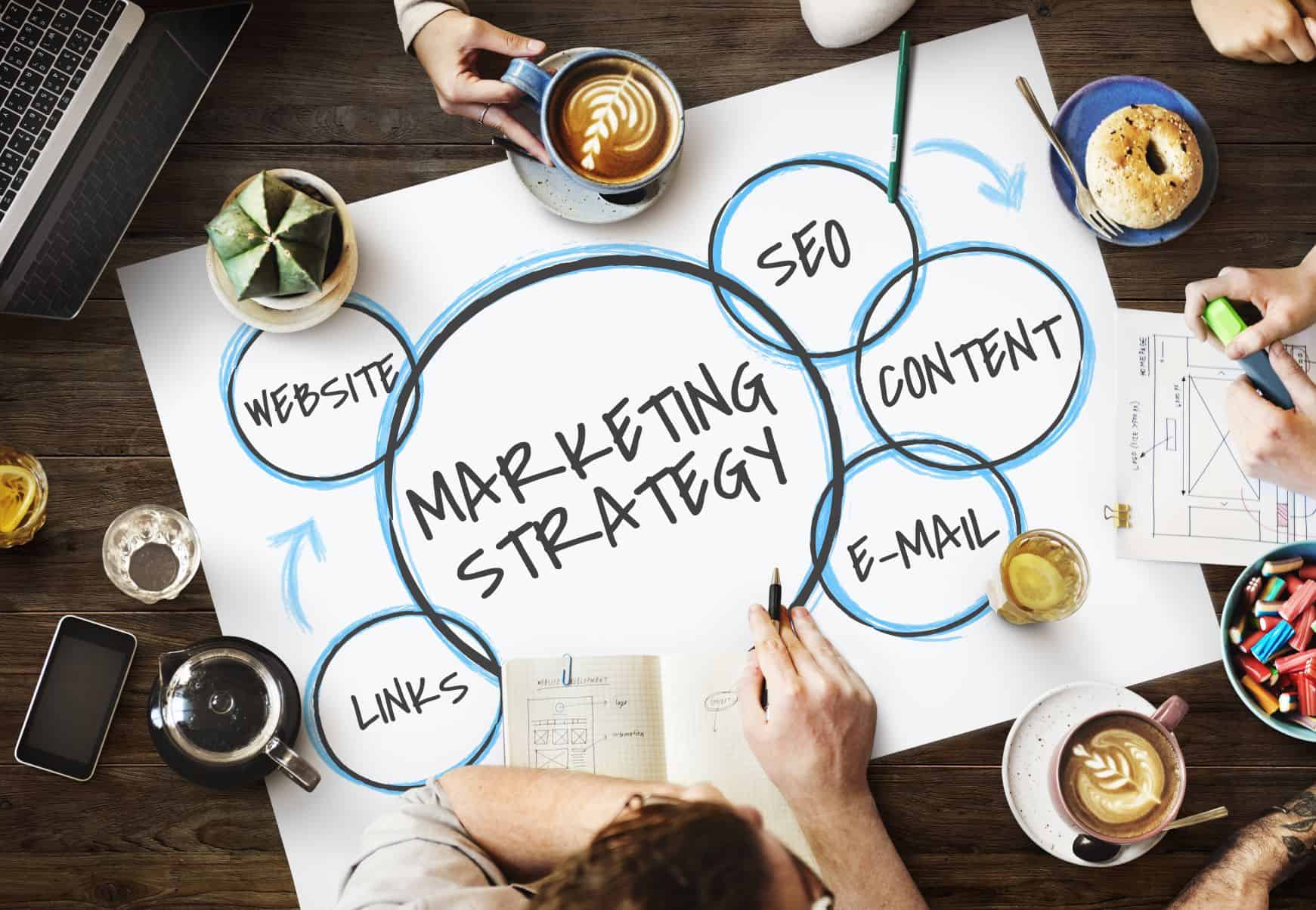
Demand generation is a broad term, but it comes down to this: driving awareness of your products or services to create a pipeline of leads. A good demand generation strategy will cover every step in a buyer’s journey and every stage of sales funnel. Bingo. Leads a-go-go.
Digital marketing is a broad term that covers any online campaign. It could be social media ads, organic social media posts, banner ads, websites, videos, podcasts or all of the above. The common factor is that customers interact with the campaign through computers, phones, tablets or other devices. This is opposed to ‘traditional’ marketing, which includes print ads, billboards and television commercials.
A series of automated emails that encourage the recipient to respond in a certain way, for example, to buy an item they’ve put in their online basket but not purchased. Drip campaign emails can be personalised to feature the customer’s name and other details.
If you’re publishing ongoing blogs and content, you need to plan ahead. With an editorial calendar, you can set out an effective schedule to keep your content marketing on track.
These are emails that are sent out automatically (the clue’s in the name) when customers take a certain action. This could be signing up for a mailing list, for instance, or completing a transaction. Automated emails are designed to take such tasks off your hands so you can concentrate on more complex and valuable work.
A list of email addresses to which your business can send marketing emails. You can create email lists by collecting email addresses through pop-up forms on your website or when customers make a purchase. The list can be broken down into different customers segments, which you can target through tailored email marketing communications.
The engagement rate tells you how involved your audience is with your content. It could be likes, shares, messages, re-tweets, click-throughs – what matters is the interaction. High engagement shows that your campaign is resonating with the people who see it. There are various ways of measuring this metric, but 1% to 5% is generally considered to be a healthy figure.
Just like plants that stay green all-year round, evergreen content is always fresh and attractive. It features topics that will never go out of date, for example, losing weight and cooking spaghetti. Why is this important? Because producing content is time-consuming. Topical content may achieve engagement, but you have to keep publishing to stay relevant. With evergreen content, you’re not under pressure. Go evergreen to step off the treadmill.
Wouldn’t it be great if you knew exactly how customers looked at your web pages? If you could tell which bits grabbed their attention first and where they looked after that? Good news: the tech for that exists. It’s called ‘eye tracking’ and it can help you decide where to place elements on a web page.
Ever clicked on something – perhaps quiz results, a webinar or an eBook – only to be confronted with a form asking you to leave your details? This is gated content. To open the gate and unlock the content, you have to give some personal information in exchange. It’s a highly effective way of gathering leads and growing your email list.
Google has its own advertising service, which lets you put search results for your website on a search engine results page (SERP). This powerful form of paid advertising targets people who are searching for your products or services. Advertisers are billed on a pay-per-click (PPC) model, which means you’re only charged if someone actually clicks on your ad.
At the top left or right of many websites, you’ll see an icon with three horizontal bars: this is known as a hamburger menu. Clicking on it opens up navigation for the website. Sadly, it involves no actual hamburgers.
An email that’s rejected by a server due to a permanent reason, for example, because the email address doesn’t exist. If the email suffers a ‘hard bounce’, it won’t be sent again. See also: soft bounce.
Hashtags allow you to find, categorise and join conversations and information on certain topics. The format is always ‘#’ followed by a words, numbers or underscores, with no spaces. Hashtags are a form of metadata that can be hugely influential on certain platforms such as Twitter and Instagram. You can come up with new ones, but make sure they’re relevant to your post or content.
Who is most likely to want to buy your products or services? That person or company is your ideal customer. Once you know who they are, you can create a profile, detailing their preferences and data. Use it to shape your campaign and target the right people.
An iframe is a part of a web page where the content is from another site or page. Iframes commonly feature content from third parties, for example, banner ads from Google Ads or another ad network.

Inbound marketing offers consumers something they want, for example information or entertainment, and builds in details of your product or service. If you sell showers, it could be a blog about refreshing a bathroom that features details of your product. Inbound marketing works by attracting prospects and encouraging them to engage with your brand and find out more, rather than bombarding them with out-and-out advertising.
An influencer is someone who has gained credibility in a certain niche – they don’t have to be a celebrity. Influencers operate online, usually through social media, and will have amassed a number of followers who are ‘influenced’ by what they say, show and do. Influencer marketing is when a brand works with this person to promote its products. The influencer may endorse or mention the brand, which then rewards the influencer.
An infographic (or information graphic) is “a visual representation of data or information”, according to the Oxford English Dictionary. Over the last 10 years, they have become increasingly popular as a way of communicating information quickly, attractively and clearly.
Words or phrases that customers tend to enter on search engines when searching for certain products or topics. By integrating these into the copy on your website, you can ensure that your site is featured in the results on the search engine. Typical Maverick Group keywords might be ‘integrated advertising’, ‘advertising agency’ and ‘brands’. Keywords are at the heart of search engine optimisation (SEO).
The first page a customer ‘lands’ on when they when they click through from an ad, email or other asset. The landing page sits separately from your website and isn’t part of the navigation. It will have a specific purpose as part of a wider campaign.
Has someone left their email details on your website or asked to be contacted? This is a lead. Leads are people or organisations with the potential to become a client. Generate and nurture them – your brand’s success depends on it.
Lead generation is the stage that kicks off the sales process. Emails, cold calls, content marketing – they’re all methods of lead generation. The aim is to get people or businesses interested in your brand, so they’ll go on to become customers. It’s all about raising awareness with a view to conversion.
You’ve got a sales lead, but they’re not quite ready to buy. That means coaxing them down the sales funnel via ‘lead nurturing’. With this inbound marketing technique, you encourage leads towards a sale without scaring them off. Nurturing typically involves sending personalised, quality content to get the lead to convert.
Often confused with translation, localisation involves adapting marketing or a product to a particular target market. It’s not just a case of converting text into another language, but ensuring that images, cultural references and branding are relevant and tailored to the target audience.
How much revenue would a customer bring over the course of their relationship with your business? This is their Lifetime Value (LV) – a metric that should be at the heart of your sales and marketing strategy and decisions.
Imagine that you send an email with a money-off voucher to every customer who makes a first purchase on your website. Now imagine a system that does it for you. With marketing automation, technology steps in and handles repetitive tasks. It can be adapted for all kinds of basic, recurring jobs.
The marketing funnel represents the steps a customer takes with your brand. From awareness, interest and consideration, to intent, evaluation and purchase.
Meta descriptions and meta keywords are information about a website or web page that’s designed for search engines. They explain briefly what a web page is about, and which keywords are contained in the text. The search engine can then use this information to decide if the site is relevant to a search, and where it should rank in the search results. Don’t even think about trying to game the system: if you put keywords in the meta tags that don’t appear in the actual web text, search engines will spot this and ignore all your meta information.
Mid-funnel customers are those who are aware of your brand, product or service but not yet ready to buy. Your marketing at this stage needs to subtly educate, pushing them towards the bottom of the funnel where they will convert and purchase. Mid-funnel marketing techniques include product trials, case studies and webinars.
If you’re advertising to people via their smartphones or tablets, that’s mobile marketing. Campaigns can make the most of technological features including SMS and MMS messaging, apps and push notifications, in-app or in-game marketing, mobile websites and QR codes.
Native ads are those that look like part of the channel they’re on. Think in-feed advertising on social media, recommended content and promoted search listings. Research shows that consumers are more likely to click on advertising that matches the look, feel and function of the media it’s hosted on.
Content that’s NOT on your website is classified as off-site content. Guest blogs, client reviews, news articles, your brand’s social media accounts: they all fall into this category.
You might sell on your website. You might sell in shops. You might drive customers to both via emails and social media. In short, you may have multiple channels at work. Omnichannel marketing brings all of this together in one coherent plan. The goal is an integrated shopping experience that spans all your touchpoints, from events and mobile devices, to bricks-and-mortar stores.
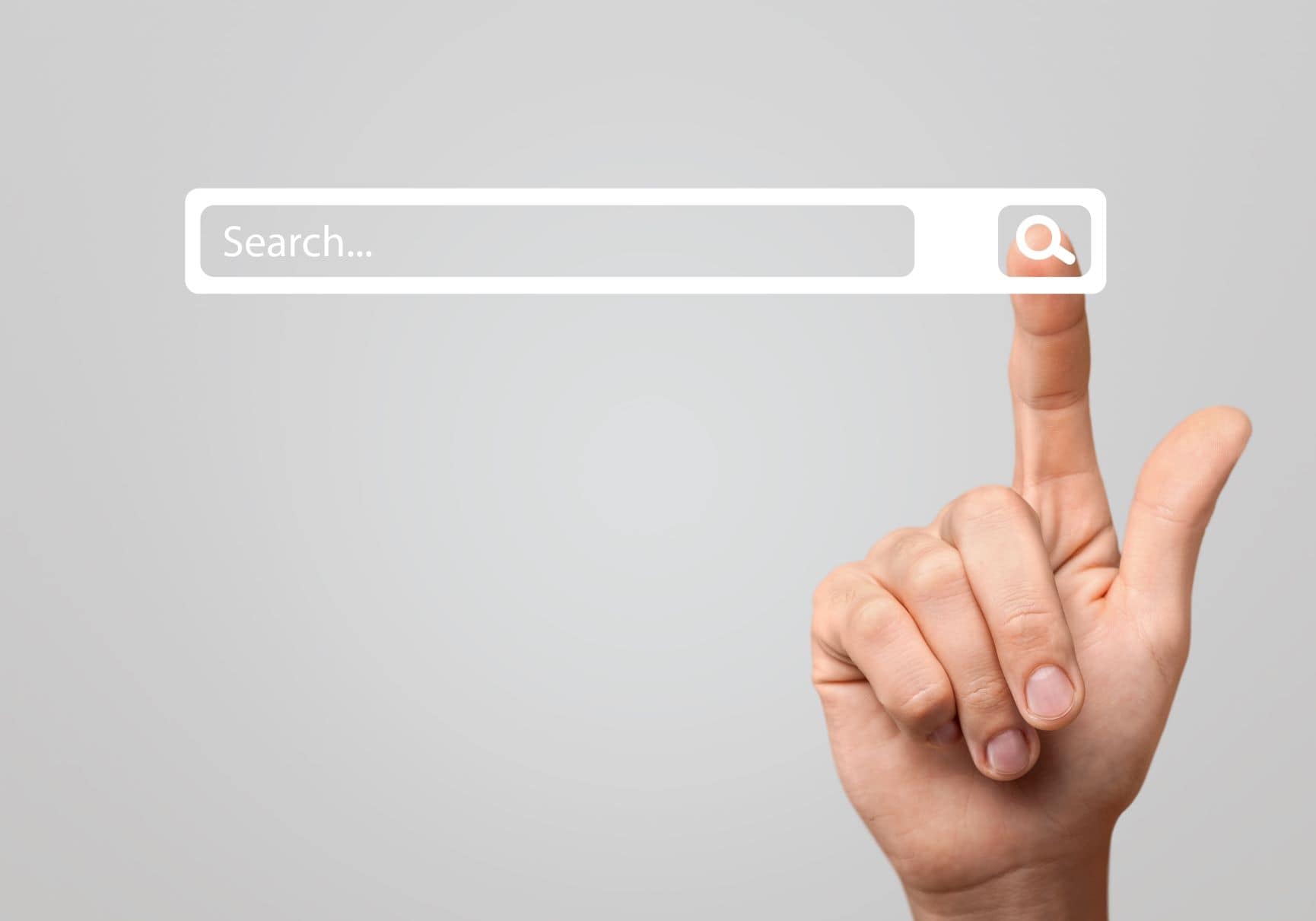
Onsite content includes everything on your website – from product pages to blogs to FAQs. It’s important to get this content right because it’s what customers see and affects how your site is ranked by search engines such as Google.
Organic search results are the ones customers get naturally when they perform a search online. No one has paid to make sure they’re featured, unlike paid search (see below). You can improve your organic search ranking via search engine optimisation (SEO) by making sure you have the most relevant and commonly searched for keywords featured prominently on your website.
Outbound marketing (or traditional marketing), is the kind that puts out an explicit sales message – press ads, TV ads, digital ads or posters, for example. This is opposed to inbound marketing, which seeks to draw potential customers in through content marketing or other attraction techniques.
On every page of search results, you’ll find a few that are ‘paid’. Although they look like normal, organic search results, they’re usually labelled ‘ad’ or ‘paid’, and tend to sit at the top or bottom of the page. These paid results are triggered when the user inputs certain keywords that a business has purchased. The pricing model is usually pay-per-click (PPC) – see below.
You know when you spot a product in a film or TV show? That’s partner marketing in action. It’s when two business work together for mutual gain, promoting each other’s products (or with one party offering another benefit). When goals and incentives are in tune, you can reach new customers, boost sales, and ramp up your brand’s visibility. With partner marketing, it’s a win-win.
With this type of campaign, your online ads appear on a website. But instead of paying for them to appear, you only pay when someone clicks on them. You can easily work out the ‘cost-per-click’ of your campaign: campaign fee / number of clicks = cost per click.
Who is using your site, brand or product? What sort of person are they? Personas define different user types within a certain demographic or behaviour set. When applied together with market segmentation, personas can represent specific customers. Just what you need to tailor your marketing strategy.
The wonders of technology mean that you can tailor your advertising to each customer. Using analytics, you can ensure that the right message is seen by the right person at the right time – so you stand a better chance of engaging with them.
What do your ideal customers think and believe? What are their habits? How do they behave? The answers to such questions are called ‘psychographics’, and they’re a window into your customers’ minds and lives. With this information, you can segment your audience into sub-groups that you can target in different, relevant ways.
Public relations (or PR) is all about promoting and protecting a company’s image, brand, products and services so they’re well regarded by the public and the media. Almost all large organisations have some sort of PR team, tasked with releasing company news, profile-raising, safeguarding brand image and minimising the damage from negative events. Press releases, news conferences, interviews, social media posts – they all come under PR’s remit.
A Quality Score is a figure provided by Google Ads. It indicates how relevant your pay-per-click (PPC) ads and landing pages are to your chosen keywords. To improve your Quality Score, try optimising your ads and landing pages, and double-checking your keyword strategy.
Ever spotted an ad on Facebook for something that you were only looking at the other day? That’s remarketing. Using tracking data, a site can ‘follow’ you across the internet and display relevant ads. In short, it’s a second (or third, fourth or fifth) chance to convert you into a customer.
In simple terms, ROI measures what you’ve got back compared to what you’ve put in. it’s a way of determining if an investment has been costly, or worthwhile and profitable. To calculate ROI, the equation is net benefits / total cost. With the result (a percentage) you can work out if an investment has performed as you had hoped.
Desktops, laptops, tablets, phones – today, websites can adapt to all of them thanks to Responsive Web Design (RWD). Using HTML and CSS, designers can make sure that websites automatically resize to all screen sizes.
Someone’s visited your website and put something in their basket. Or perhaps they’ve asked for a quote or participated in a product trial. In other words, you know that they’re interested in your product or service because they’ve performed some kind of action. This is a sales qualified lead – someone who’s ready to move to the next stage of the sales funnel.
Also called paid search, SEM involves getting your online ads featured on a search engine results page (SERP). Search engine marketing (SEM) ads can drive traffic to websites or include other calls to action. The ads usually appear at the top of search results and sometimes to the side. Most SEM is run on a pay-per-click (PPC) basis. No clicks, no cash.
When someone searches for something on the internet, the search engine ‘crawls’ over billions of possible websites in seconds to find the most relevant sites. It then displays the details on a search engine results page (SERP). Search engine optimisation means adapting your site so search engines are more likely to rank it highly in search results. You can do this by changing the content and structure, for instance, featuring keywords in headlines and subheads, and enhancing your meta data.
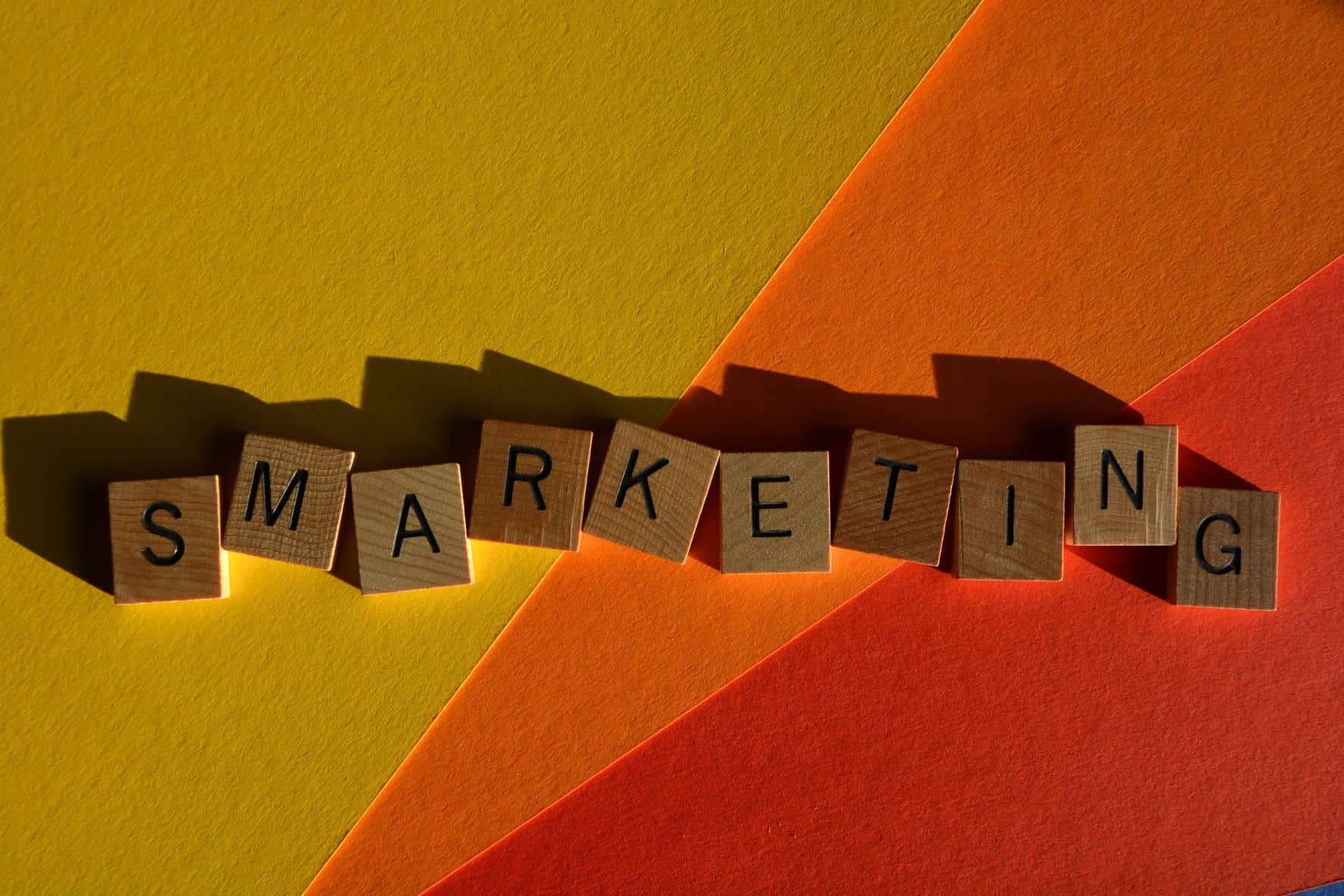
Every customer is different – and your marketing strategy needs to reflect that. With segmentation, you can divide your audience into separate groups with a view to targeting one (or more) according to their specific profile. You can segment according to age, income, interests or a million other factors. Tailor campaigns to particular segments to make the biggest impact.
Sales + Marketing = Smarketing. When these two forces are integrated, they can combine their respective powers to achieve a common goal. In the case of Account-based Marketing, smarketing results in higher ROI.
Over the last 20 years, a whole marketing industry has sprung up around social media. Now a science in its own right, social media marketing specialises in advertising brands, products and services on platforms such as Facebook, Twitter, Instagram and LinkedIn. Social media ads can be paid or organic, and feature anything from videos to viral content. And there’s special software available to manage your campaigns, such as Hootsuite, Sprout Social and HubSpot.
Mailbox full? Email too big? It may experience a ‘soft bounce’, i.e., it may be rejected for a temporary reason. If that’s the case, it can be sent again at a later date.
Sponsorship creates powerful connections between brands and partners. This can have benefits on many levels: raising brand awareness, creating position associations, boosting publicity, strengthening community relations and generating promotional expenditure. However, success depends on finding the right strategic fit between partners.
Roughly speaking, strategic planning a process where you set out long-term goals and how you’re going to achieve them. These goals could involve a specific project or define the whole future of your brand or organisation. Strategic planning clarifies the destination and the route you’ll take to get there.
As the terms suggests, subject matter experts are people know their domain inside out. They are authorities on a specific field – marketing strategy, sponsorship or employee engagement, for instance – and we’ve got loads at Maverick!
A thought leader is a trusted expert in their field with the power to influence. Their original thinking helps their brand or business to gain visibility and credibility, especially with top decision-makers. Thought leadership often involves publishing insights online that inspire, inform and enlighten. Thought leaders shape their industry’s narrative.
Top of the funnel or TOFU is the first stage of the marketing funnel. At this point, there are lots of potential leads who have just bumped into your product or service. Those who are interested will progress into the middle (and hopefully the bottom) of the funnel where they’ll become customers. By raising awareness of your brand, product or service, you stand the best chance to retaining these leads and eventually converting them.
What if every single person who was interested in a particular product or service bought it from you? In other words, what if you achieved 100% market share? This is Total Addressable Market (TAM) – the maximum size opportunity for your product or solution. It’s calculated like this: Average Revenue Per User (ARPU) x total potential customers in market. The result gives you a sense of the total market available.
These are automated emails that are from the sender to a single recipient. Most often, they involve account activity or an online purchase.

Understanding the experience that customers have on your website is critical. If they don’t enjoy it, you’ll lose them. UX is a whole discipline that’s dedicated to analysing what customers think and refining a user interface, for example, the way customers interact with your e-commerce site, or your broader business. The biggest, most popular websites have UX down to a T.
These are the elements on a website or app that a visitor actually uses. They could be text, images, sound, animation, video, or a combination of all five. UI layout and testing is crucial when designing and refining a website. User interfaces must be user-friendly – and that means adapting them for differently abled people.
The term ‘white paper’ originally referred to government reports addressing a specific subject in detail and explaining a solution. The colour white meant that the report was accessible to the public. Today, the term has been adopted by the wider world, with brands and businesses publishing their own authoritative white papers on all manner of topics. If you download a white paper, get ready for a deep dive into a particular subject.
Wireframes are used when designing websites. They show how content and functionality will work on each web page. For example, you’ll be able to see where headlines, images and text will sit, and where drop down menus and mouse-overs will be in place. However, they rarely show the final look or actual content.
A workflow is an organisational tool. In marketing, it’s a sequence of steps you follow to create a campaign or project. It could be complex and visual, with diagrams and charts. Or it could as straightforward as a series of numbered steps.
So, there you have it: marketing jargon decoded in one handy guide. We’re constantly updating our list, so do check back to read up on the latest industry lingo.